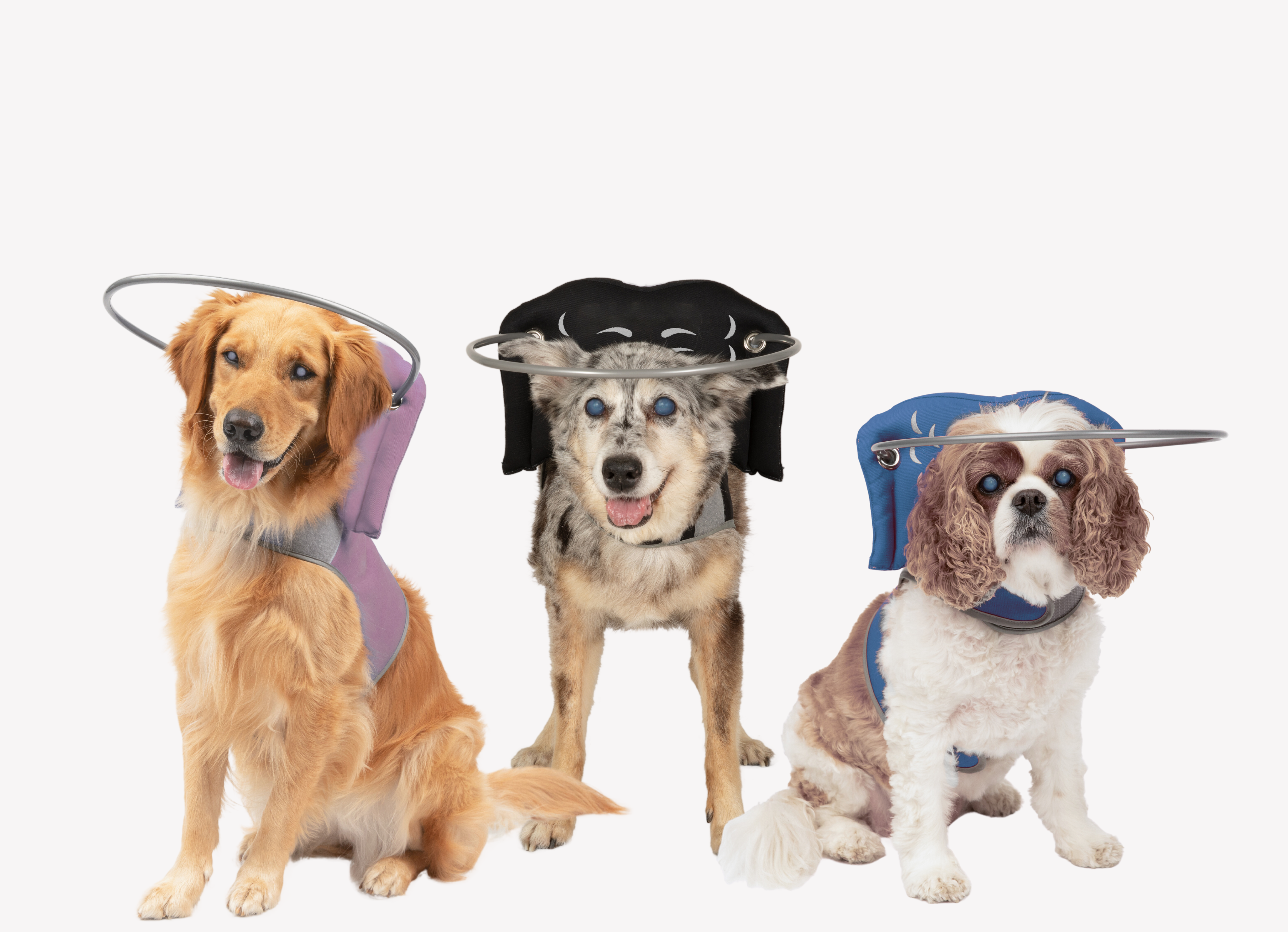Pomeranian Lifespan: How Long Do Pomeranians Live? (Life Expectancy)

5 Signs Your Dog's Eyesight is Changing
Just like in humans, as dogs age their eyesight changes as well. Senior dogs may experience changes in depth perception, worsening vision, poor night vision, or even blindness. Since dogs rely heavily on their sense of smell and other senses, they adjust well to changes in eyesight. So as a pet parent, how can you tell if your dog’s eyesight is worsening?
5 Signs of Progressive Vision Loss in Dogs
As a senior dog parent, you may be asking yourself, how do I know if my dog's vision is changing? Truthfully, most pet parents won't know their dog is blind until the dog has less than 20% of their vision. Here are five ways to tell if your dog's eyesight is getting worse:
1. Dog is Hesitant to Go Down the Stairs
As dogs get older they will begin to develop night blindness to some degree. Changes in the retina in aging dogs causes retinal degeneration and results in poor vision in dim lighting. Other signs of night blindness may include a reluctance to go outside at night, struggling in darkened stairways, and jumping in or out of the best at night. Providing a night light or leaving lights on, may make it easier for your senior dog to see.
2. Bumping into Furniture or Walls

Dogs who suddenly lose their vision may begin bumping into walls and furniture. Often, this is the first real sign pet parents will notice of their dog’s worsening eyesight. Although the change in vision may appear to have happened overnight, it’s rare that a dog goes blind that quickly. Canine blindness usually occurs gradually and it can be difficult for pet parents to notice the subtle signs of vision loss.
Providing your pet with a blind dog halo can make navigating their home much easier and safer. The halo acts as a bumper to warn a blind pet of any nearby obstacles and guide them away from it. Not only does a halo protect your pet, it helps blind dogs become more confident and independent. A halo will work best for dogs that become blind very quickly. A dog dealing with a slow change in vision or is born blind will likely be able to adapt without needing a halo.
3. No Longer Able to Catch Treats or Toys
Changes in eyesight or depth perception may make it difficult for your dog to play fetch. If your once nimble pup is unable to catch their treats or favorite toy, check their menace reflex. The menace response test should cause a dog with normal vision to react, flinch or blink. Begin by holding your hand about 18” away from your dog’s face and move your hand quickly forward. Your hand should move fast enough that your dog reacts, but not so fast that they feel the air moving around them. Stop your hand about 3” away from the end of their nose. If your dog doesn’t blink or react, they are experiencing vision loss and it’s time to call your veterinarian.
4. Refusing to Get In or Out of a Car
Dogs with changing vision, may be uncomfortable doing normal daily activities like jumping in or out of the car. Their hesitancy to jump down from the car may stem from not being able to see the ground below them.
Oftentimes, senior dogs need your aid to get in and out of the car. Your dog’s trust combined with knowing that you are near give them the confidence they need to make that first jump. A lifting harness can help your dog to feel more secure and save your back as you help them into the car.
5. Dog is Stunned By Sunlight
Dogs with severe cataracts often experience worsening vision in bright light, like sunlight. Sunlight causes the pupils to get smaller which causes the light to pass through the densest, cloudiest part of the eye. Which may make it even harder to see. Alternatively, some blind dogs can only see in extremely bright light. Any sudden reaction to light, may indicate your dog is experiencing vision loss and should be seen by your veterinarian.
Related Articles:









